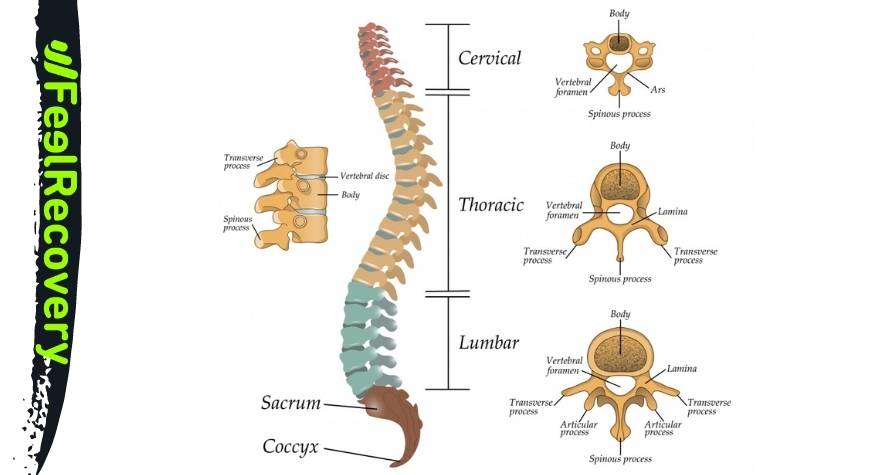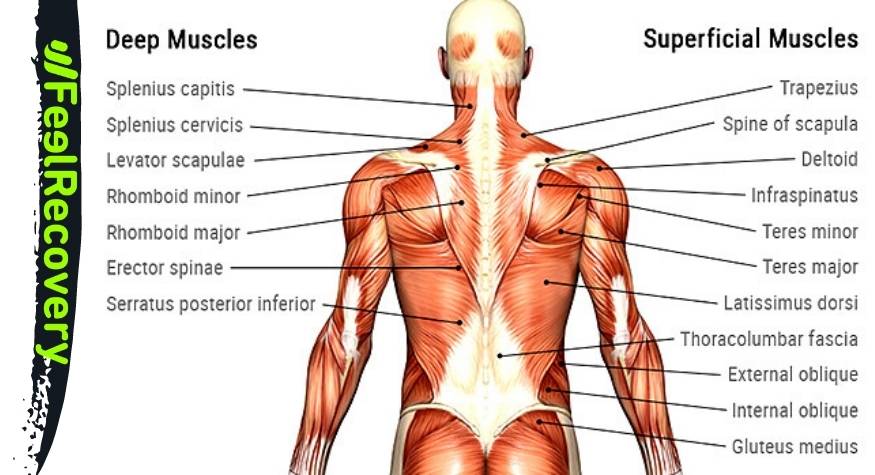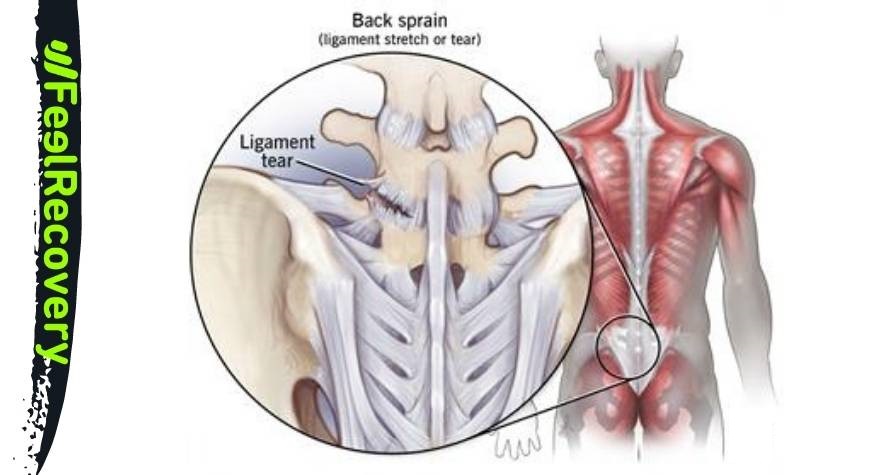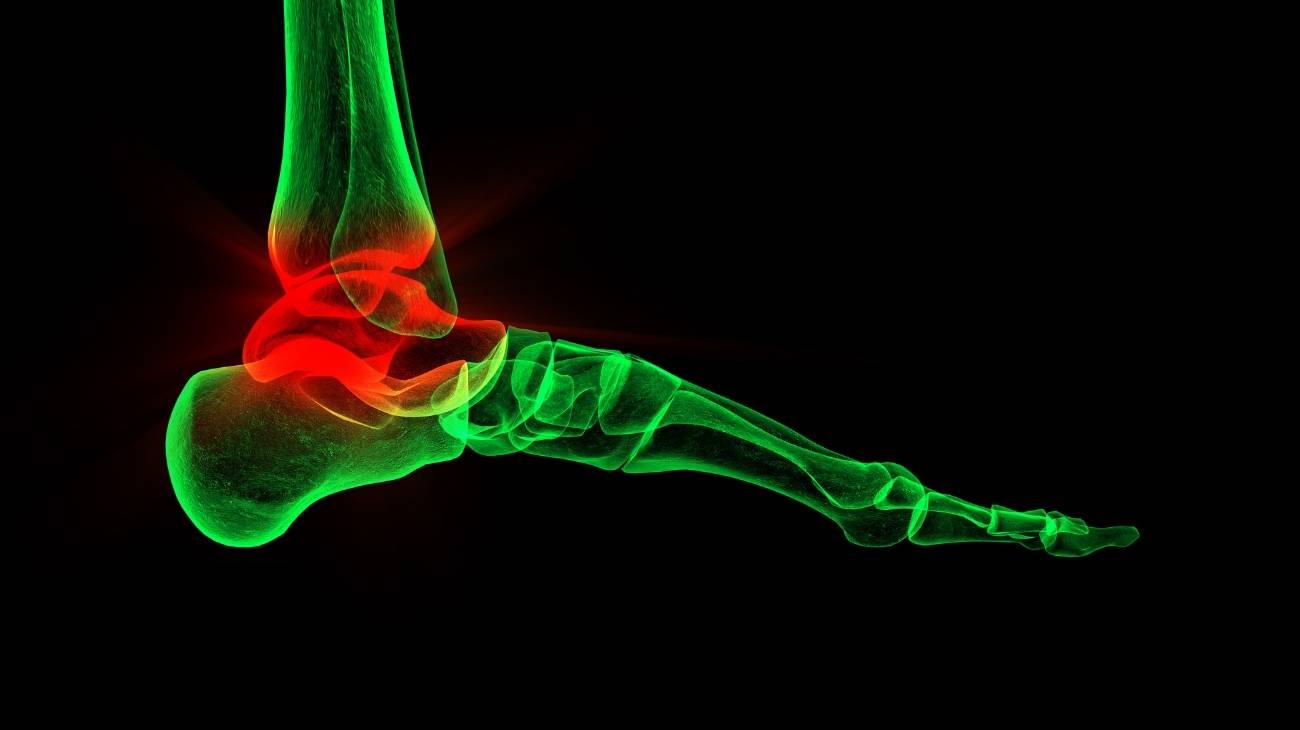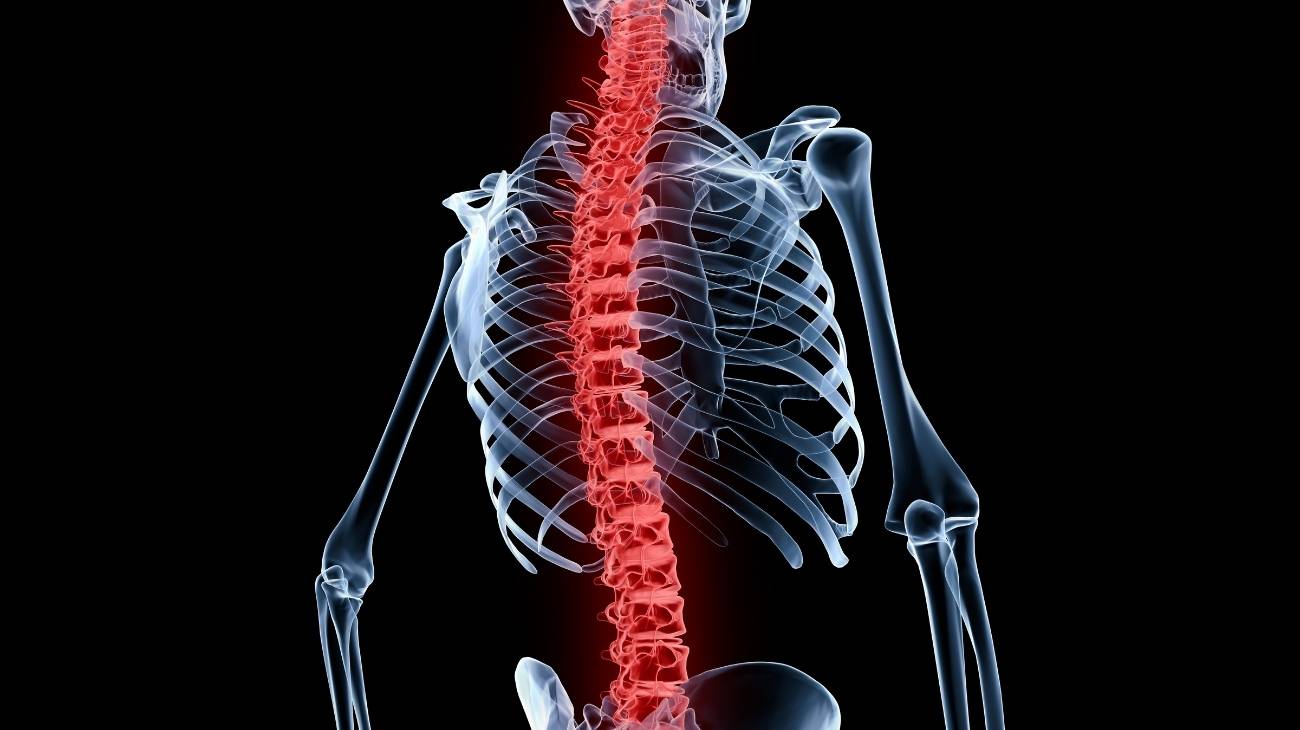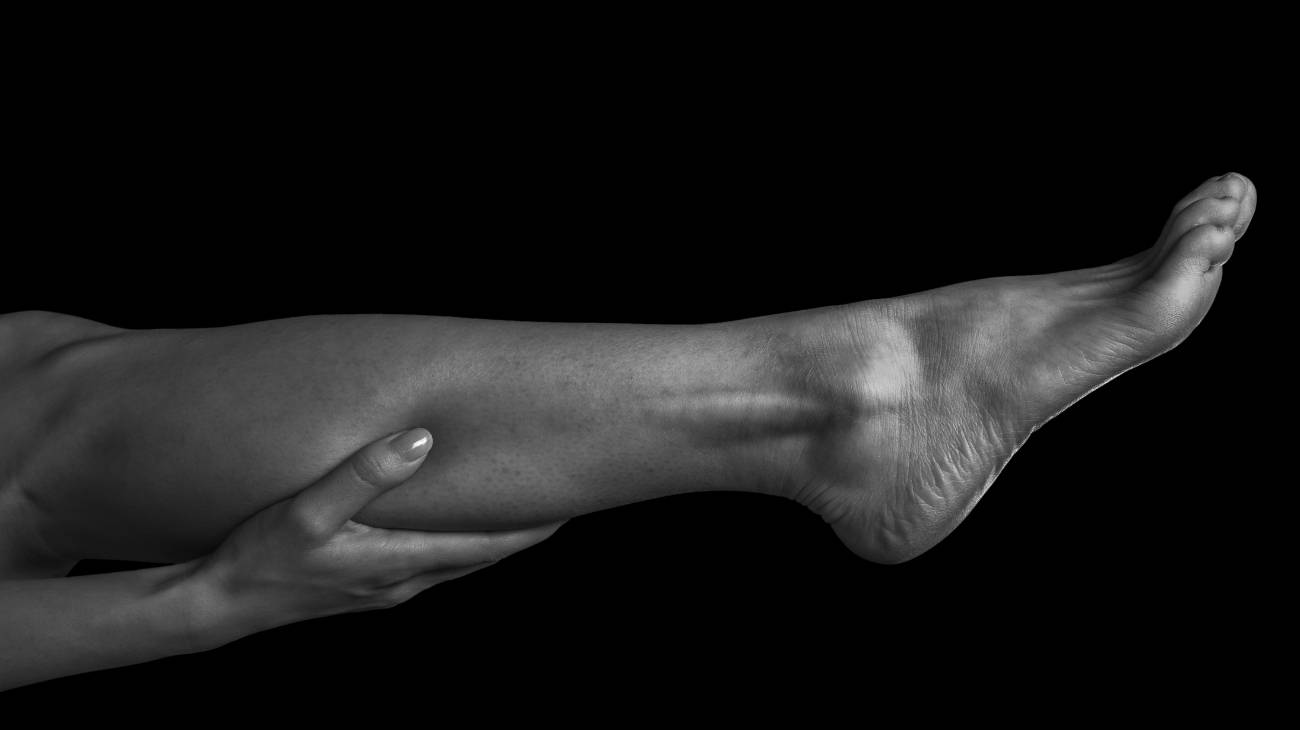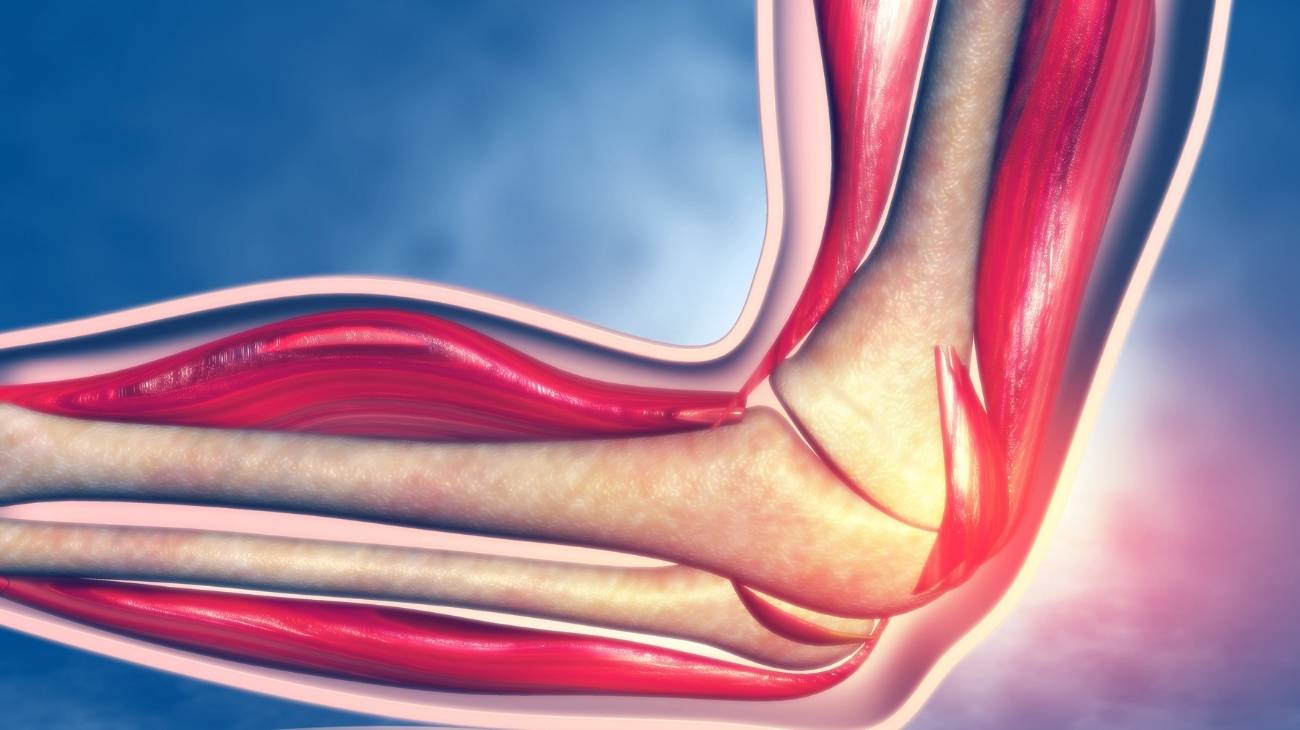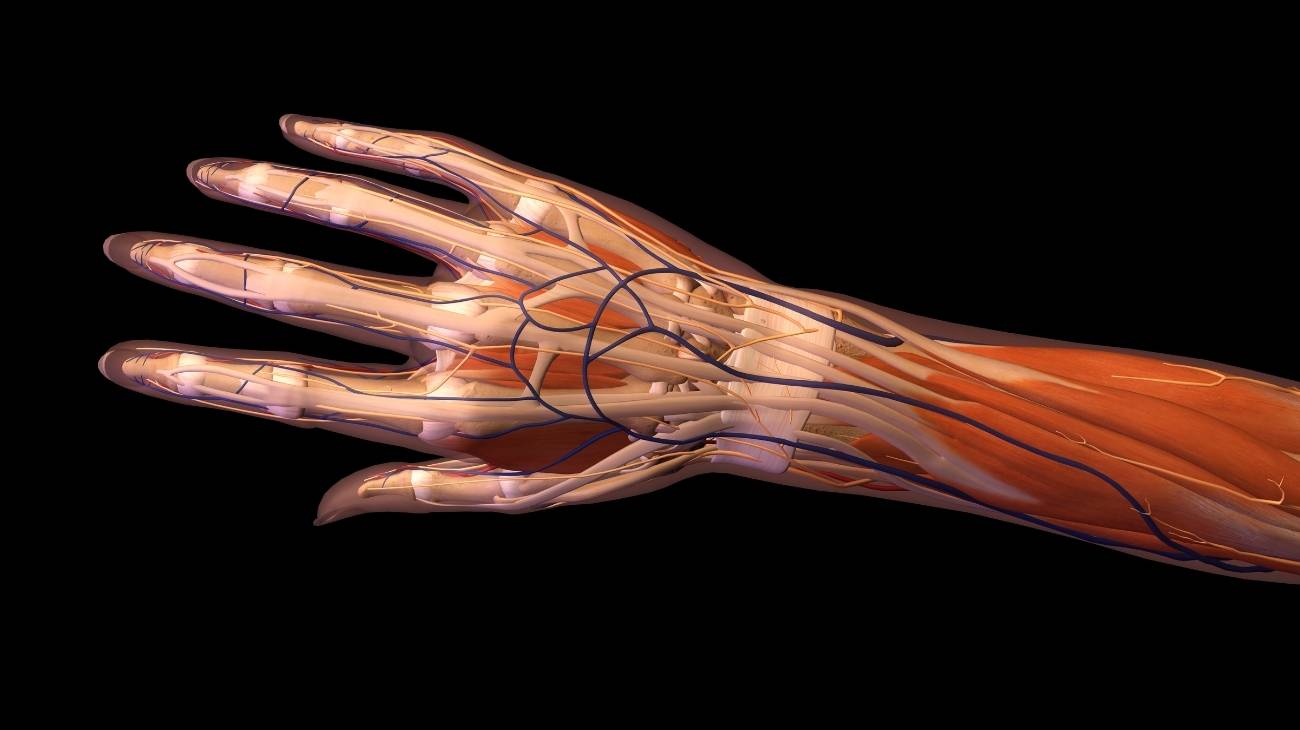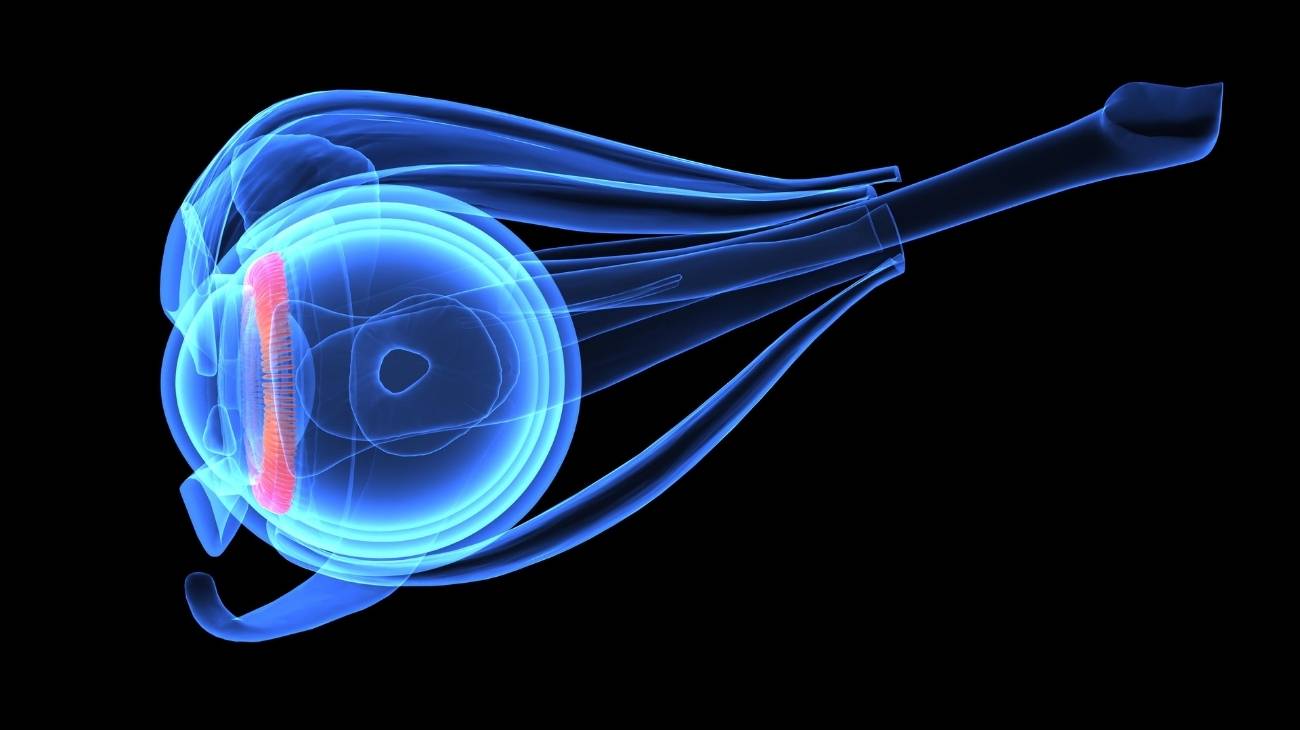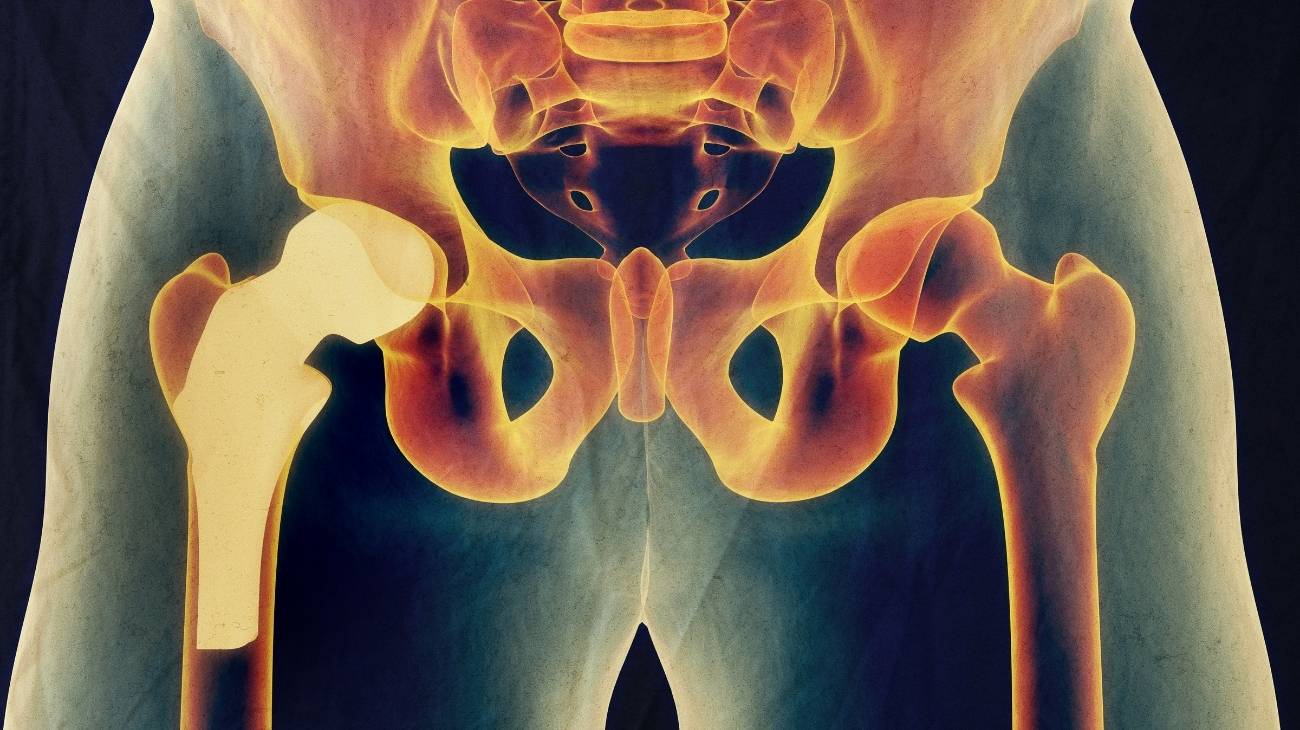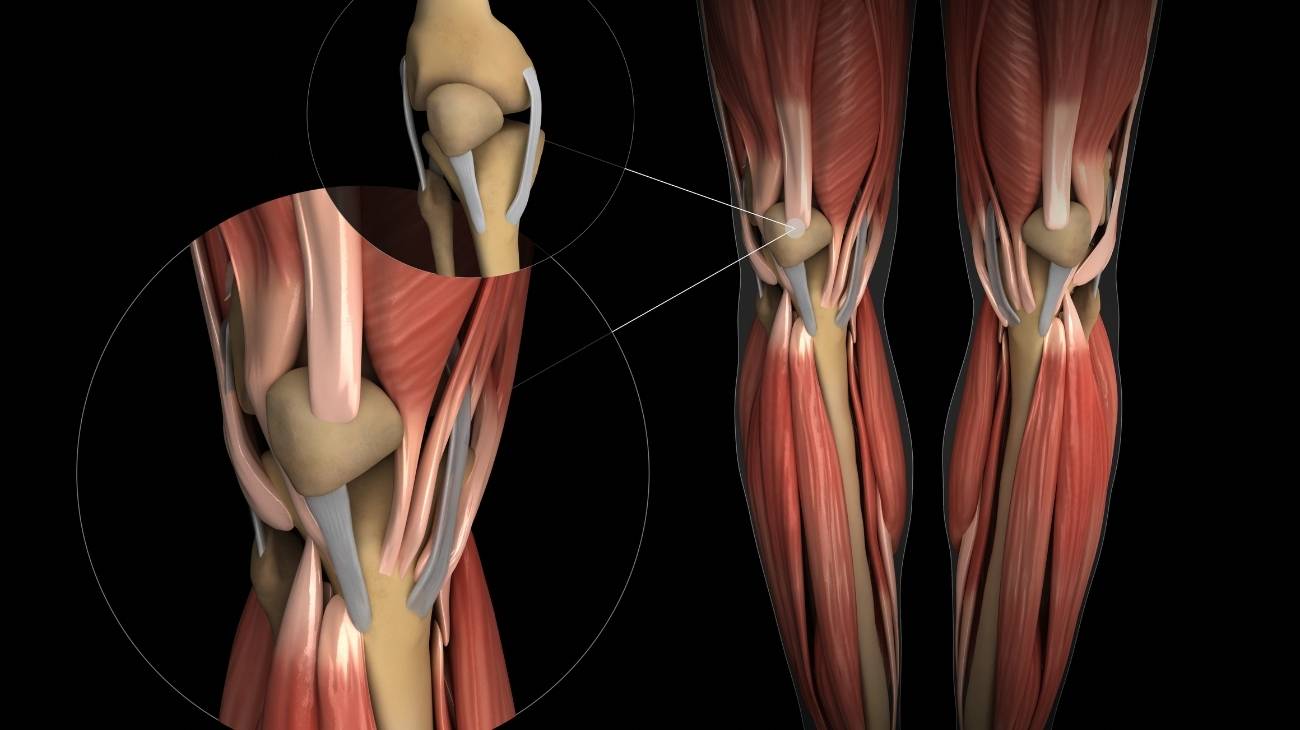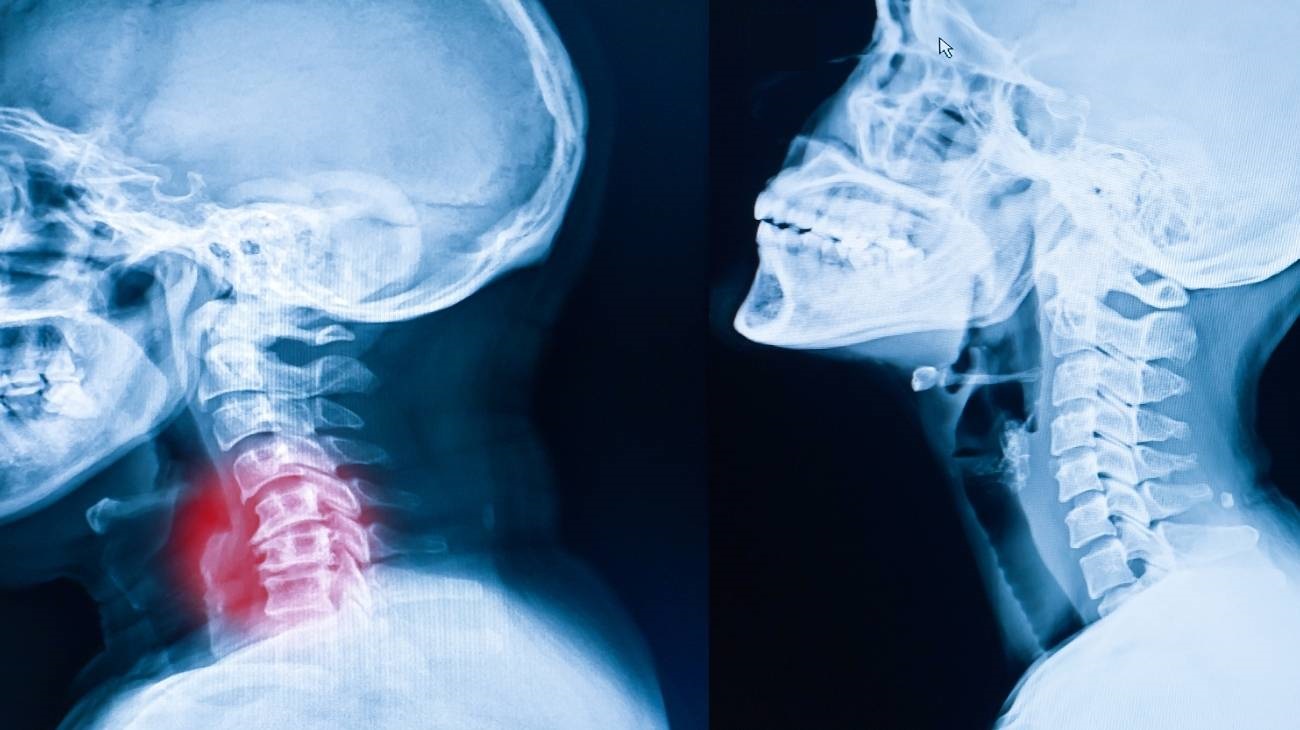The back is the area opposite the chest, located at the back of the human body, between the shoulders and the waist. This area has a very important anatomical and biomechanical function, which we will discuss below. But this is not the only thing you will read about, we will also show you the different ligaments and joints of this part of the body.
Finally, we will mention the complementary and non-invasive treatments that are currently used to relieve back pain and a complete list of the best therapeutic products that will help you to avoid back pain. Take a look.
Parts and anatomy of the back
The back is made up of the following anatomical parts:
Bones and spine
The bones of the back are:
- Thoracic vertebrae: A set of 12 vertebrae called T1 to T12 inclusive. It arises from the seventh cervical vertebra in the neck to the first lumbar vertebra L1 in the lower back.
- Lumbar vertebrae: These bony tissues start from the thoracic vertebra T12 to the sacrum.
- Sacrum: This can be considered as part of the hip or as an integral bone of the lower back. It connects from the last lumbar vertebra at the top to the coccyx.
- Coccyx: The last bone forming the human spine. The spine is made up of the vertebrae, the sacrum and this bony tissue.
- Ribs: These are thin bones that extend from each of the thoracic vertebrae to the front of the body. Their purpose is to protect the vital organs.
- Scapula: Also known as the scapula. It is a flat, wide bone whose mission is to maintain balance while walking.
Muscles
The muscular structure of the back is made up of the following tissues:
- Trapezius: Its origin and insertion are multiple. It originates in the occipital protuberance of the nape of the neck in the posterior cervical ligament and in the apophysis from the seventh cervical to the tenth and all its supraspinous ligaments. It inserts on the posterior border of the clavicle, on the acromion and on the spine of the scapula. Its action is to keep the scapula balanced and to limit movement in the spine.
- Epispinous or spinous: Tissues located along the spine whose function is to join spinous processes between distant vertebrae. It is part of the "erector spinae" group of muscles and tendons.
- Latissimus dorsi: The lumbar vertebrae T7 to T12, the iliac crest, ribs 10 to 12 and the thoracolumbar fascia are the sites of origin of this back muscle. It inserts into the lesser tubercle of the humerus to allow dorsal flexion and arm movements.
- Iliocostalis: This muscle can be divided into three sections (lumbar, dorsal and cervical) due to the different sites of origin. The transverse processes of the lumbar and thoracic vertebrae, the sacrum and the iliac crest up to the ribs is the route of this tissue. Its action allows the extension of the back.
- Lesser rhomboid: The seventh cervical and first thoracic vertebrae to the medial border of the scapula is the path taken by this muscle to fix the scapula and rotate the glenoid cavity of the shoulder.
- Greater rhomboid: This muscle allows the scapula to be held medially and compressed at the ribs. It does this because of its position in the back, from the second to the fifth thoracic vertebra to the edge of the scapula.
- Splenius: The ligament of the nape of the neck gives rise to the birth of this broad muscle, while the 7 cervical vertebrae and the first 4 thoracic vertebrae see the insertion of this tissue. This allows for the tilt and rotation of the skull.
- Levator scapulae: This is a muscle is also known as the angular muscle of the scapula. It runs from the process of cervical vertebrae 1 to 4 to the medial border of the scapula. It gives rise to rotation of the scapula in the glenoid cavity and elevation of the scapula in other movements.
- Serratus anterior: Its three origins occur in the first 10 ribs and insert into different parts of the scapula. Their actions allow them to fix the scapula to the thorax and to elevate the ribs in the breathing process.
- Serratus posterioris: It runs from the 11th thoracic vertebra and from the second lumbar vertebra to ribs IX to XII. The work of this muscle is to lower the lower area of the aforementioned ribs for the exhalation movement.
- Roundus major: Connects in the groove of the tubercle of the humerus with the inferior angle of the scapula to achieve extension and rotation of the arm.
- Intertransverse: A system of muscles and ligaments that allow the spine to be held upright. This group includes the rotators, the semispinatus and the multifidus.
- Infraspinatus: It originates in the infraspinous fossa and inserts into the greater tubercle of the humerus bone. This allows different movements of the arm.
- External Oblique: The ribs V to XII in their external part give origin to this muscle tissue, it is inserted from the midline of the abdomen to the navel (linea alba) up to the inguinal ligament.
- Deltoid: This muscle can be considered as part of the shoulder or back because it originates from the crest of the spine of the scapula, the acromion and the clavicle and inserts into the humerus. It allows different movements of the arm.
Ligaments
The ligaments found in the back are:
- Yellow, flavo or flavum: This is a ligament that connects the first segment of the sacrum to the axis of the arches of the vertebrae.
- Anterior longitudinal: This tape is responsible for joining the anterior surfaces of the vertebrae to the posterior area of the sacrum.
- Posterior longitudinal: This has a similar course to the anterior ligament, but differs from it in that it runs along the inside of the vertebral canal.
- Alars: This group of ligaments is responsible for connecting and controlling the rotation of the skull by connecting the tubercles of the occipital condyle to the second cervical vertebra.
- Apical odontoid: This is the name given to the cord connecting the foramen magnum to the odontoid process.
- Intra-articular of the head of the ribs: It divides the joint into two parts because it runs from the head of the rib to the intervertebral cartilage.
- Sacrospinous: this is the ligament responsible for joining the ischium to the sacrum and coccyx.
- Costotransverse: this ligament joins the neck of the rib to the transverse process. It can be divided into two parts, lateral and superior.
- Supraspinatus: This is a set of ligaments which are responsible for holding tight the spinous process of the cervical vertebra (7C) to the sacrum.
- Cruciform of the atlas: The atlas is the first cervical vertebra that joins the spine to the neck. This tissue is responsible for this work.
- Lumbar-costal: It connects the processes of the first and second lumbar vertebrae to the 12th rib.
- Nuchal: This connective tissue is in charge of holding together the external protuberance of the nuchal line up to the process of the 7C vertebra.
- Spread from the rib head: This band connects each of the rib heads to the intervertebral cartilage and the bodies of the two corresponding vertebrae.
- Deep posterior sacrococcygeus: connects the lower sacral canal with the posterior area of the coccyx.
- Sacrotuberous: connects the transverse tubercles of the sacrum to the lower part of the ilium and coccyx.
- Transversus atlas: this fibrous band is responsible for holding together the odontoid process with the atlas ring.
- Superficial posterior acrococcygeus: this band is responsible for connecting the lower opening of the sacrum with the posterior area of the coccyx bone.
- Lateral acrococcygeus: Like the anterior ligament, this band connects the coccyx to the sacrum, but from the lower lateral corner of the sacrum.
- Interspinous ligaments: These are responsible for connecting the root to the apex of each adjacent spinous process.
- Intertransverse: The name refers to the function of these ligaments, which are responsible for joining the vertebrae on their external transverse sides.
- Anterior iliac sacral: The preauricular groove and the auricular surface of the ilium are connected to the sacrum by this ligament.
- Posterior iliac sacral: The sacrum and the ilium are connected by these posteriorly located fascicles.
- Sacro iliac interosseous: The tuberosities of the sacrum and ilium are connected by these ligaments.
Best products for back pain relief
Bestseller
-
Acupressure Mat and Pillow (Black/Gray)
$49.95 -
Acupressure Mat and Pillow (Green/Navy)
$49.95 -
Acupressure Mat and Pillow (Pink/Bordeaux)
$49.95 -
Acupressure Pillow (Black/Gray)
$29.46 -
Acupressure Pillow (Green/Navy)
$29.46 -
Acupressure Pillow (Pink/Bordeaux)
$29.46 -
Back Support Belt (Black)
$34.95 -
Back Support Belt (Green)
$34.95 -
Back Support Belt (Pink)
$34.95 -
Heating Pad for Microwave Classic Bottle Shaped (Hearts)
$19.95 -
Heating Pad for Microwave Classic Bottle Shaped (Oxford)
$19.95 -
Heating Pad for Microwave Classic Bottle Shaped (Sport)
$19.95 -
High Density Foam Roller for Muscle (Black/Gray)
$29.95 -
High Density Foam Roller for Muscle (Green/Navy)
$29.95 -
High Density Foam Roller for Muscle (Pink/Bordeaux)
$29.95 -
Ice Massage Roller Ball (Black)
$39.95 -
Ice Massage Roller Ball (Green)
$39.95 -
Ice Massage Roller Ball (Pink)
$39.95 -
Microwave Heating Pad for Back Pain Relief (Extra Large) (Hearts)
$29.95 -
Microwave Heating Pad for Back Pain Relief (Extra Large) (Oxford)
$29.95 -
Microwave Heating Pad for Back Pain Relief (Extra Large) (Sport)
$29.95 -
Microwave Heating Pad for Neck & Shoulder Pain Relief (Hearts)
$24.95 -
Microwave Heating Pad for Neck & Shoulder Pain Relief (Oxford)
$24.95 -
Microwave Heating Pad for Neck & Shoulder Pain Relief (Sport)
$24.95 -
Microwaveable Heating Pad for Pain Relief (Hearts)
$19.95 -
Microwaveable Heating Pad for Pain Relief (Oxford)
$19.95 -
Microwaveable Heating Pad for Pain Relief (Sport)
$19.95 -
Pack 2 In 1 Foam Roller High + Soft Density (Black/Gray)
$29.95 -
Pack 2 In 1 Foam Roller High + Soft Density (Green/Navy)
$29.95 -
Pack 2 In 1 Foam Roller High + Soft Density (Pink/Bordeaux)
$29.95 -
Sacroiliac Support Belt (Black)
$24.95 -
Sacroiliac Support Belt (Green)
$24.95 -
Sacroiliac Support Belt (Pink)
$24.95 -
Soft Density Foam Roller for Recovery (Black)
$29.95 -
Soft Density Foam Roller for Recovery (Green)
$29.95 -
Soft Density Foam Roller for Recovery (Pink)
$29.95 -
Trigger Point Massage Stick (Black)
$14.95 -
Trigger Point Massage Stick (Green)
$14.95 -
Trigger Point Massage Stick (Pink)
$14.95
Biomechanics of the spine
The movements that the spinal column can perform are:
- Flexion: This biomechanical muscular movement consists of tilting the lumbar spine towards the front of the body while keeping the pelvis fixed. In this way, an amplitude of 60 to 90° can be produced.
- Extension: By keeping the hip fixed, it is possible to tilt the spine backwards. This causes an opening of 25 to 35°.
- Axial rotation: It is possible to rotate, keeping the legs and hips fixed, the torso on its own axis with an amplitude of 35° to 40°. This movement is also known as spinal rotation.
- Lateral flexion: This consists of leaning the body to one side of the body by up to 40°, with the spine as the axis.
Most common back injuries
Take a look at the following list of the most common back injuries.
Types of back injuries
Pay attention to the most common back injuries:
- Muscle contractures in the back: This ailment can appear in the upper, middle and lower back, which is why it is a fairly frequent injury in people. It is the accumulation of metabolites in the muscle fibres that cause involuntary tension in the muscle. The most affected are the trapezius, rhomboids and latissimus dorsi.
- Back sprains and dislocations: The importance of the ligaments in keeping the spine and the whole back in its correct position can cause any sudden action or blow to cause tears or stretching of these connective tissues.
- Lumbar osteoarthritis of the back and lower back: The articular bodies in the back have cartilages that allow the movements made in the spine to be smoothed. If these cartilages wear out, they cause the bones to touch, resulting in severe pain and inflammation in the lumbar spine. This is called osteoarthritis of the lumbar and thoracic vertebrae.
- Sciatica: The sciatic nerve originates (via several roots) in the lower back and reaches the toes, controlling the muscles of the lower limbs. When there is trauma or herniated discs, inflammation occurs in Spain, which is known as sciatica.
Sports injuries to the back
Learn about the most common sports injuries:
- Back and lumbar injuries in cycling: Contractures in the erector spinae muscle and latissimus dorsi are the most common injuries in cyclists. But they are also prone to sciatica, sprains and in some cases lumbar arthrosis.
- Back and lumbar injuries in Crossfit: It is common to find people who practice this activity with lumbar sprains, dislocations, herniated discs and tendonitis. They also develop lower back contractures and sciatica.
- Back injuries in gymnastics: Dislocations, sprains and herniated discs are common in gymnastics. It is also possible to find athletes with lumbar osteoarthritis, chronic inflammation of the sciatic nerve and tears.
- Back and lower back injuries in golf: Herniated discs, impingement and latissimus dorsi and serratus contractures are the most commonly seen injuries in golf. This is not to say that there are no people with dislocations and sprains in the lumbar back.
- Back injuries in weightlifting: Disc crushing, impingement and sciatica are the most common back injuries in weightlifting. It is also possible to find small bone splinters, osteoarthritis, sprains and muscle contractures.
- Back and lower back injuries in tennis: Dislocations, tendon inflammations and torn ligaments are the most common ailments suffered by tennis players. This does not mean that they are also prone to muscle contractions in the lower back and sciatica.
- Back injuries in Yoga: Poorly executed or repeated movements can lead to pinched or herniated discs. Tensions in the muscle fibres of the lower and middle back are also common in beginners. Dislocations and sprains can also occur in this sport.
Diseases and ailments in the back
The following are the most common diseases and ailments that people suffer from in the back:
Herniated disc
A herniated disc is a disease of the cartilaginous intervertebral discs. This condition can cause slippage or rupture of these shock absorbers in the spine, resulting in back weakness, numbness, pain and malfunctioning of the legs and arms.
Spinal stenosis
Spinal stenosis is the constant pressure on the spinal cord due to narrowing of the intervertebral openings in the spine. It can be caused by a variety of factors, the most common being arthritis, tumours and herniated discs.
Paget's disease
Paget's disease is a condition that causes the bones of the spine to break down, resulting in abnormal bone formation. This creates a malfunction of the spine, which leads to different consequences. The precise causes of this disease are not known.
How can we relieve back pain through complementary and non-invasive therapies?
Learn about the best complementary and non-invasive therapies to help relieve back pain symptoms:
Heat and cold therapy
Through the application of easy-to-use products, this therapy can be implemented to help reduce back pain. Among them are hot and cold gel pads, which produce instant heat and a controlled cold allowing you to obtain the benefits of both temperatures. Keep in mind that this therapy must be monitored by a doctor.
Compression therapy
The advantage of this non-invasive therapy is that it keeps the joints of the lower back in one place. This will help to reduce inflammation and pain gradually. In this case it is advisable to use compressive garments such as a lumbar support, sacroiliac pelvic belts and elastic bandages. This will help to improve blood circulation more quickly.
Massage therapy
Massages stimulate the back and lumbar area allowing the reduction of muscle and tendon contractures. It is possible to apply this non-invasive therapy by professionals or to perform self-massages with the help of other people. In the latter case, it is advisable to choose products that are easy to use, such as percussion massage guns, electric neck and shoulder massagers and back massage seats.
Acupressure therapy
It is possible to apply this therapy to lumbar pain, sciatica and lower back pain due to the nerve stimulation that is performed on different parts of the body to achieve anti-inflammatory and blood circulation effects. This can be applied by means of a medical authorisation to evaluate the patient's situation. Once the therapy is approved, you can choose acupressure mats or kits that will effectively help you with this task.
Thermotherapy
This therapy consists of applying heat directly to the back to improve the exchange of nutritive substances between the blood and the tissue fibres. It reduces pain and inflammation much faster than any other method. To obtain these benefits, different techniques can be applied, the most commonly used being microwave heat packs.
Cryotherapy
Cryotherapy can be used without any problems in the treatment of mid back and lumbar pain. This means that the use of cold on the affected area improves the symptoms of inflammation and reduces muscle stiffness. Different techniques can be used, which should be consulted with the doctor beforehand, but the most popular are cold gel packs which allow for much faster vasodilation.
Electrical muscle stimulation (EMS)
Muscle electrostimulation, or EMS, is a therapy that consists of stimulating muscle contractions through the use of electricity, so as to achieve an effect of activity and hypertrophy as in the gym, but without the need to go to any sports center. This means that you can put your muscles to work without leaving home.
Electrotherapy
This is a technique that seeks relief from pain and some physical ailments through the application of electrical and electromagnetic energy, among other variants, through the skin with the use of conductive pads called electrodes. It is a very safe type of therapy and must be applied by a physical therapist specialized in the manipulation of electricity to treat some kinds of ailments.
Myofascial release therapy
Also known as myofascial induction, this therapy consists of the application of manual massage to treat the shortening and tension generated in the myofascial tissue that connects the muscles to the bones and nerves. For this purpose, various massage techniques are used that focus on the so-called trigger points.
Percussion Massage Therapy
Vibration or percussion massages are precise, rhythmic and energetic strokes on the body to achieve relief from some annoying symptoms when muscle fibers are tightened, often by a high workload on them and that has left trigger points in the muscle fibers.
R.I.C.E Therapy
The R.I.C.E. therapy is the first and simplest of the treatment protocols for minor injuries. It appears in the sports field to deal with accidents involving acute injuries. For many years, it has been considered the most suitable for its speed and results.
Trigger points therapy
Myofascial pain points or trigger points are knots that are created in the deeper muscle tissues, causing intense pain. The pain does not always manifest itself right in the area where the point develops, but rather this pain is referred to nearby areas that seemingly do not appear to be related. In fact, it is estimated that more than 80% of the pain they cause manifests in other parts of the body.
Other effective alternative therapies
Learn about other effective treatments that help relieve back pain:
- Natural remedies using plants: Phytotherapy stimulates the circulation and reduces inflammation of the back. For this purpose, certain plants with sedative and anti-inflammatory properties are used in the form of teas or infusions. Among the most common are peppermint, lavender and ginger.
- Acupuncture: This treatment allows the patient to relax in order to reduce contractures in the back muscles by means of needle infiltration in specific areas.
- Kinesiotherapy: This consists of performing different biomechanical movements to stimulate hip amplitude and improve lower back pain. A doctor should be consulted before choosing this complementary therapy.
- Aromatherapy: Specific aromas are used to relax the patient in order to decompress the lumbar region and the patient's back. Essential oils or aroma diffusers are used to help reduce stress.
- Osteopathy: It is possible to use this technique, which has not been scientifically proven, to combat back pain. It consists of exercises, supervised by a professional, which help to improve the muscles and connective tissues of the back.
References
- Hansen, L., De Zee, M., Rasmussen, J., Andersen, T. B., Wong, C., & Simonsen, E. B. (2006). Anatomy and biomechanics of the back muscles in the lumbar spine with reference to biomechanical modeling. Spine, 31(17), 1888-1899. https://journals.lww.com/spinejournal/Abstract/2006/08010/Anatomy_and_Biomechanics_of_the_Back_Muscles_in.5.aspx
- Waxenbaum, J. A., Reddy, V., Williams, C., & Futterman, B. (2017). Anatomy, back, lumbar vertebrae. https://europepmc.org/article/NBK/nbk459278
- Panjabi, M. M., Oxland, T., Takata, K., Goel, V., Duranceau, J., & Krag, M. (1993). Articular facets of the human spine quantitative three-dimensional anatomy. Spine, 18(10), 1298-1310. https://journals.lww.com/spinejournal/Abstract/1993/08000/Articular_Facets_of_the_Human_Spine_Quantitative.9.aspx
- Huelke, D. F., & Nusholtz, G. S. (1986). Cervical spine biomechanics: a review of the literature. Journal of orthopaedic research, 4(2), 232-245. https://onlinelibrary.wiley.com/doi/abs/10.1002/jor.1100040212
- Illes, S. T. (2015). Low back pain: when and what to do. Orvosi Hetilap, 156(33), 1315-1320. https://europepmc.org/article/med/26256495
- Burton, A. K. (2005). How to prevent low back pain. Best practice & research Clinical rheumatology, 19(4), 541-555. https://www.sciencedirect.com/science/article/abs/pii/S1521694205000240
- Hoy, D., Brooks, P., Blyth, F., & Buchbinder, R. (2010). The epidemiology of low back pain. Best practice & research Clinical rheumatology, 24(6), 769-781. https://www.sciencedirect.com/science/article/abs/pii/S1521694210000884
- Waddell, G. (2004). The back pain revolution. Elsevier Health Sciences. https://books.google.es/books?hl=en&lr=&id=MsM5EAAAQBAJ
- Cohen, S. P., Argoff, C. E., & Carragee, E. J. (2008). Management of low back pain. Bmj, 337. https://www.bmj.com/content/337/bmj.a2718.full.pdf+html
- Adams, M. A. (2004). Biomechanics of back pain. Acupuncture in medicine, 22(4), 178-188. https://journals.sagepub.com/doi/abs/10.1136/aim.22.4.178

